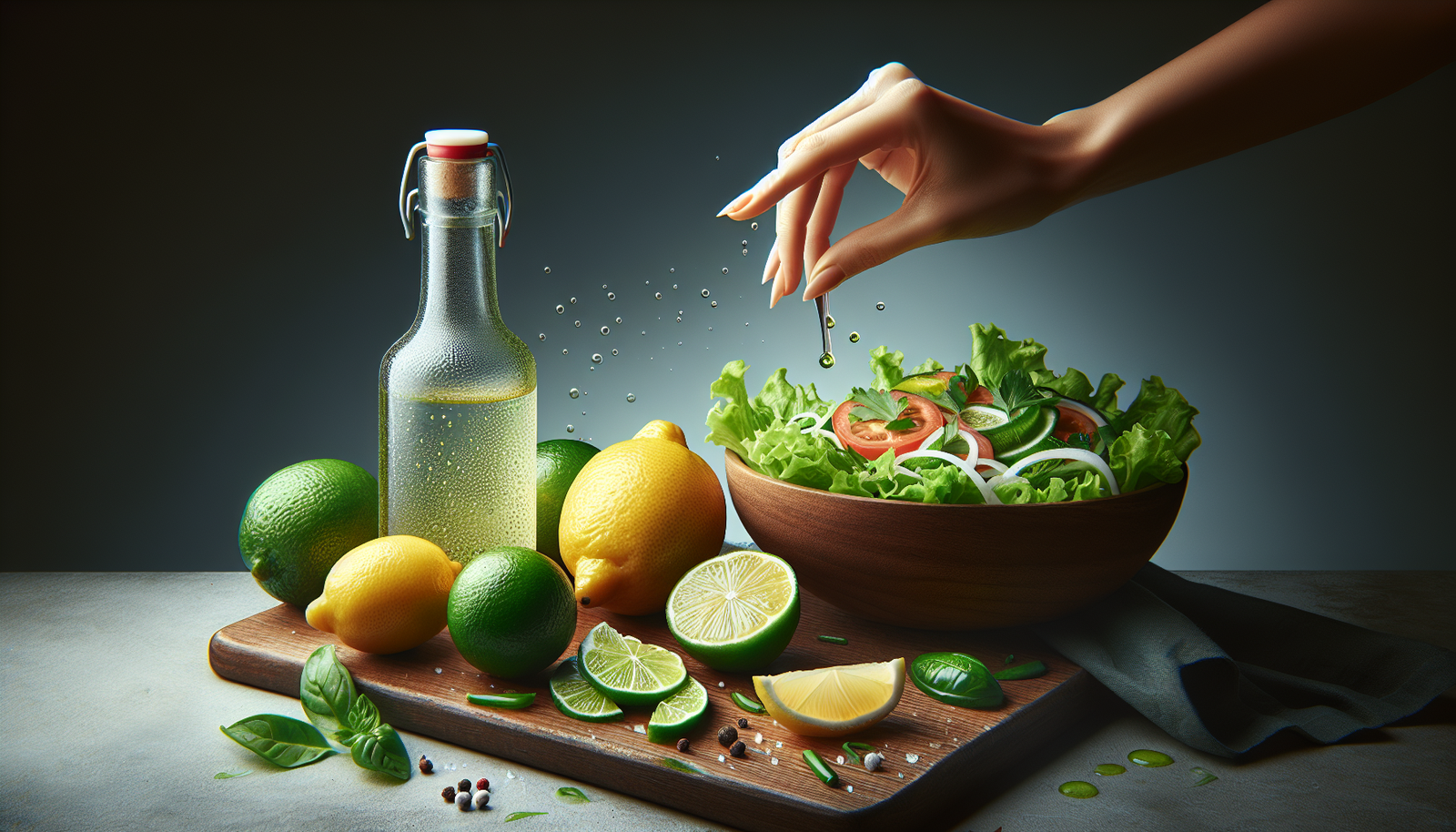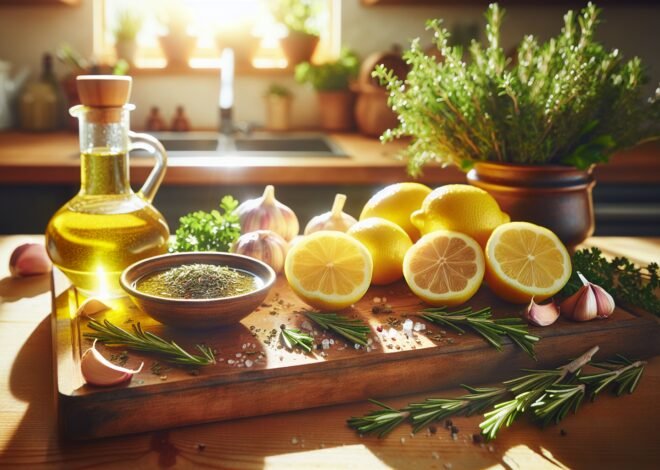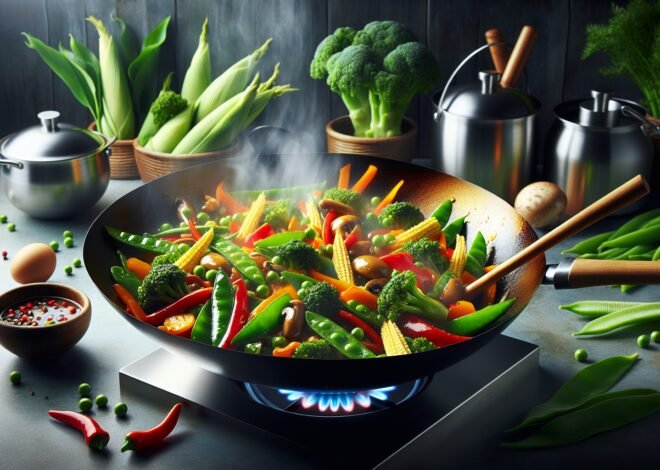
Using Acidity in Seasoning: Citrus, Vinegars, and More
Acidity is a key player in seasoning that’s often overlooked. From citrus fruits to vinegars, adding the right acidic balance can brighten your dishes and enhance the flavors of other ingredients. Learn how to use acidity to take your cooking to the next level.
Why Acidity is Important in Cooking
Acidity is a crucial component in cooking, transforming ordinary dishes into extraordinary culinary experiences. It elevates flavors, adds depth, and can turn a flat dish into something magical. Understanding the different aspects of acidity allows cooks to wield it like a secret weapon, enhancing flavors and achieving perfect balance.
How Acidity Balances Flavors
Cooking is all about balance, and acidity plays a key role in achieving it. It acts as a counterpoint to sweet, salty, and even bitter flavors, bringing harmony to a dish. Imagine a rich, creamy sauce that feels heavy on the palate. A splash of vinegar or a squeeze of lemon can cut through that richness, refreshing the taste buds. This balance keeps flavors from becoming overwhelming, inviting the eater to savor every bite.
Acidity also adds brightness to a dish, making flavors more vivid and pronounced. It can enhance the natural sweetness of fruits, complement the earthiness of roasted vegetables, or sharpen the flavors in a hearty stew. This interplay of flavors makes acidity indispensable in both simple and complex recipes.
Types of Acidic Ingredients
A wide array of acidic ingredients is available to the home cook. Each brings its unique character to a dish. Citrus fruits like lemons, limes, and oranges are popular for their bright, zesty acids that invigorate dishes. Vinegars, ranging from apple cider to balsamic, offer more nuanced flavors and are staples in many kitchens.
Fermented ingredients like yogurt or sour cream provide both acidity and creaminess, suitable for sauces and marinades. Tomatoes and tamarind add tanginess and depth to various cuisines around the globe. Whether fresh or fermented, each acidic ingredient has its place, providing chefs with a versatile toolkit for flavor enhancement.
The Science Behind Acidity
Understanding the science of acidity in cooking can enhance your culinary skills. Acidity is measured on the pH scale, where lower numbers indicate higher acidity. Acids in food can denature proteins, similar to cooking with heat. This process is visible in ceviche, where citrus “cooks” the fish.
Acidity also affects how we perceive flavors. It can heighten our perception of saltiness and sweetness, influencing how we season food. This is why acidic components are often added toward the end of cooking, allowing chefs to adjust the final taste of the dish.
Using Citrus to Brighten Dishes
Citrus fruits are among the most celebrated acidic ingredients in cooking. They offer a natural zest and vibrancy, transforming the ordinary into the extraordinary. From juices to zests, citrus elements can brighten any dish, bringing a refreshing touch that is both light and invigorating.
Cooking with Lemon and Lime
Lemons and limes are kitchen staples, known for their tart and tangy flavors. These fruits not only add acidity but also infuse dishes with a fresh fragrance. Lemon juice is often used in marinades, helping to tenderize meat and imbue it with a zesty kick. A squeeze of lime can awaken the flavors in spicy dishes, balancing heat with its citrusy notes.
Lemon and lime aren’t just for savory dishes. They shine in desserts, bringing a tangy twist to cakes, pies, and tarts. Their acidity counteracts sweetness, creating a well-rounded flavor profile.
Adding Citrus Zest for Extra Flavor
Citrus zest is the outermost layer of the peel, packed with essential oils and intense flavor. Unlike the juice, the zest offers a fragrant aroma without added liquid. It’s a wonderful way to enhance dishes without altering their texture.
Grated zest can be sprinkled over salads, pastas, or grilled dishes for a burst of citrusy aroma. It’s also a popular ingredient in baking, adding a subtle zing to muffins, cookies, and cakes. Incorporating zest is an easy way to elevate a dish, imbuing it with the essence of citrus.
Citrus in Dressings and Sauces
Citrus juices are key ingredients in many dressings and sauces, providing a fresh and tangy base. A simple vinaigrette of olive oil, lemon juice, salt, and pepper can transform a salad. Lime juice mixed with honey and soy sauce creates a delightful glaze for grilled meats.
In sauces, citrus can balance creaminess, cutting through the richness with its bright acidity. Lemon butter sauce drizzled over fish or chicken highlights the dish’s inherent flavors, making each bite a delight.
Vinegars and Other Acidic Ingredients
Vinegars are an essential part of the culinary world, offering a complex acidity that can enhance dishes in myriad ways. Beyond vinegar, other acidic ingredients add depth and character to recipes, each with its own unique qualities and applications.
Choosing the Right Vinegar
Vinegars vary widely, with each type bringing its distinct flavor profile. Balsamic vinegar is rich and sweet, ideal for drizzling over salads or roasted vegetables. Apple cider vinegar has a fruity tang, suitable for dressings and marinades. Red wine vinegar offers a robust acidity, perfect for pickling and braising.
Choosing the right vinegar depends on the dish and the desired flavor balance. A subtle rice vinegar works well in Asian cuisines, while malt vinegar complements fried foods and hearty stews. Understanding these nuances helps in selecting the ideal vinegar for each culinary creation.
Using Vinegar in Marinades and Pickling
Vinegar is a key component in marinades, where its acidity tenderizes meat and infuses it with flavor. A simple marinade of vinegar, oil, herbs, and spices can transform meats, vegetables, and seafood, preparing them for grilling or roasting.
In pickling, vinegar acts as both a flavoring agent and preservative. It keeps pickled vegetables crisp and tangy, extending their shelf life. From classic dill pickles to spicy kimchi, vinegar-based pickles add zing and excitement to any meal.
Lesser-Known Acidic Ingredients
Beyond citrus and vinegar, there are numerous lesser-known acidic ingredients that add depth and complexity to dishes. Ingredients like tamarind, sumac, and pomegranate molasses offer unique flavors that can elevate a recipe.
Tamarind, with its sweet and sour notes, is a staple in Indian and South East Asian cuisines. Sumac, a tangy spice, is popular in Middle Eastern dishes, providing a lemony tang without liquid acidity. Pomegranate molasses brings a sweet and tart flavor to sauces and glazes, particularly in Mediterranean cooking.
These ingredients offer creative ways to introduce acidity into dishes, expanding the culinary palette and inspiring new flavor combinations.
Conclusion
Acidity is a powerful tool in seasoning that can brighten and balance flavors. From citrus to vinegar, learning how to use these ingredients correctly can add a whole new dimension to your cooking. Experimenting with different types of acids will help you unlock fresh, exciting flavors in your dishes and elevate your culinary creations.
FAQ
What are the best acidic ingredients for cooking?
Top acidic ingredients include lemon juice, lime juice, vinegar, and tomatoes. These elements add a bright, tangy flavor and enhance the overall taste of dishes. Each ingredient brings a unique acidity, perfect for balancing flavors in different recipes.
How does acidity affect the balance of a dish?
Acidity enhances flavors by cutting through richness and sweetness. It brings brightness and depth, creating a more rounded taste profile. Proper use of acidic elements can transform a dish, making it more vibrant and appetizing.
Can I use vinegar in marinades?
Vinegar works exceptionally well in marinades, adding tanginess and tenderizing meat. Its acidic nature helps break down protein fibers, allowing flavors to penetrate more deeply. Different types of vinegar, such as balsamic or apple cider, offer varied flavor profiles.
How much citrus should I add to a dish?
The amount of citrus depends on the dish and personal preference. Start with a small amount, such as a teaspoon of lemon or lime juice, and adjust to taste. Citrus should enhance, not overpower, the primary flavors.
What’s the difference between cooking vinegars and salad vinegars?
Cooking vinegars typically have a higher acidity level, designed to withstand heat without losing potency. Salad vinegars often contain added flavors or are milder, enhancing dressings without overwhelming raw ingredients.
What are the best uses for lemon zest?
Lemon zest adds a concentrated citrus aroma and flavor to dishes. Use it in baking, dressings, marinades, and as a garnish for added zestiness. Its vibrant flavor can elevate both sweet and savory recipes.











